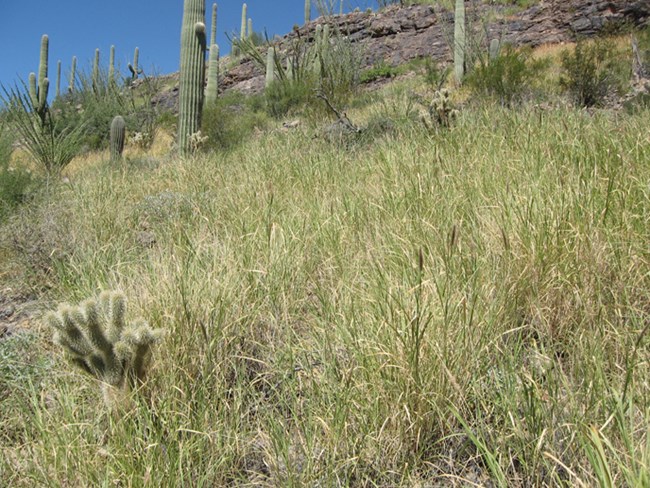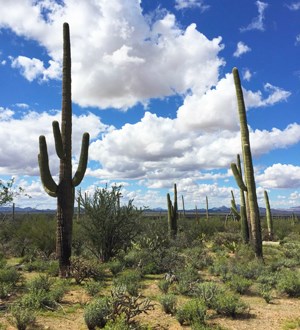Invasive Plant Species: Buffelgrass
NPS photo Buffelgrass (Pennisetum ciliare, Cenchrus ciliaris), is the archenemy of the Sonoran Desert—the invasive grass most likely to cause significant damage to the native ecosystem. Buffelgrass is native to Africa, Asia, and the Middle East. This grass was intentionally brought to arid portions of the U.S. beginning in the 1930s and was planted for cattle forage and erosion control because of its drought tolerance and high seed production. In dry climates throughout the world, buffelgrass escaped from where it was planted and has established in places where it is unwanted—natural areas, city parks, roadsides and private property. In the U.S., buffelgrass has been recorded in California, Arizona, New Mexico, Texas, Oklahoma, Missouri, Louisiana, Florida, New York, Hawai'i, Puerto Rico and the Virgin Islands. In some areas, such as the Sonoran Desert of Arizona, buffelgrass is a highly invasive non-native weed and is officially listed and regulated as a noxious weed. 
NPS Photo How did it get here?Buffelgrass is native to Africa and countries in the Middle East and Asia where it grows in savanna grasslands with sparse trees. Frequent fires are part of the savanna's natural ecosystem processes, and the trees and grasses there have adapted to survive hot fires. |
Last updated: May 6, 2025
